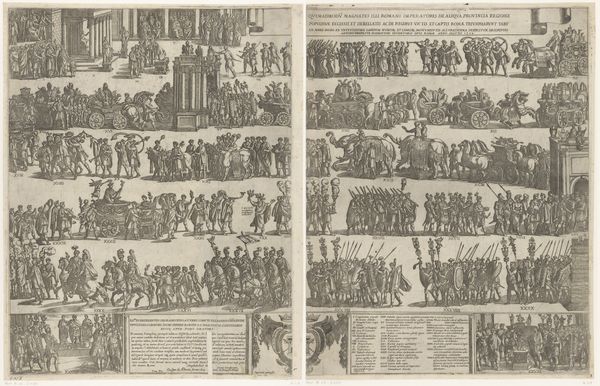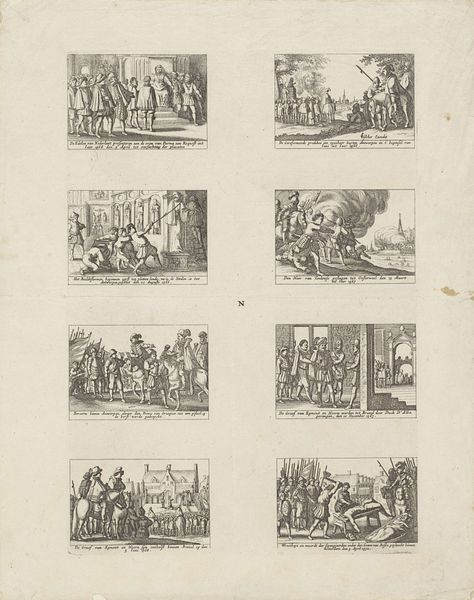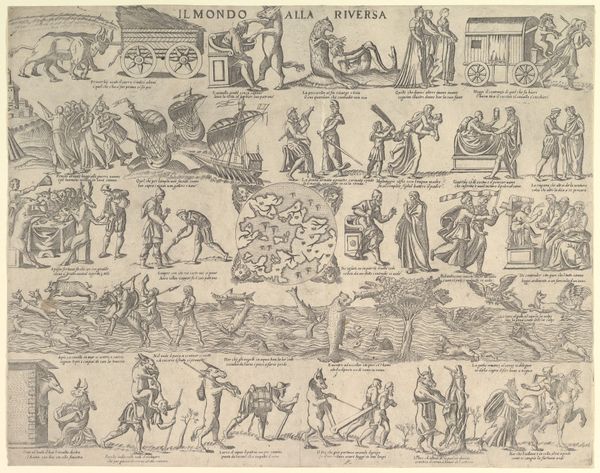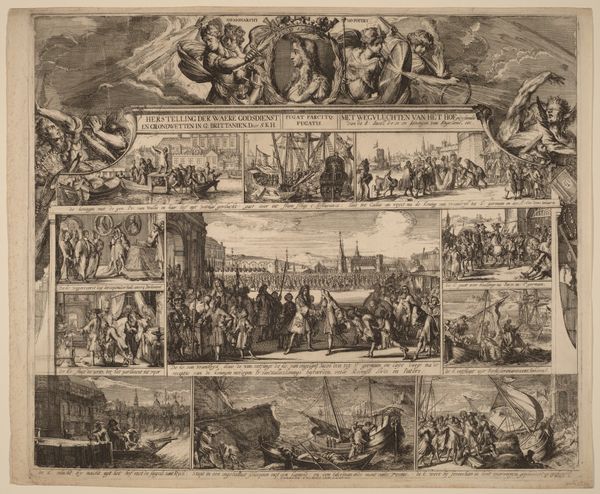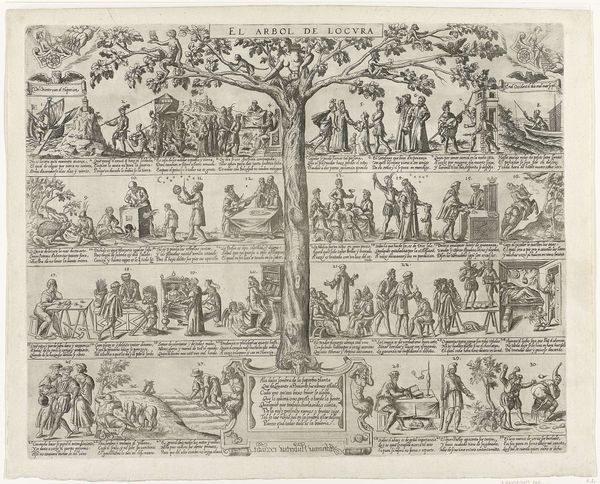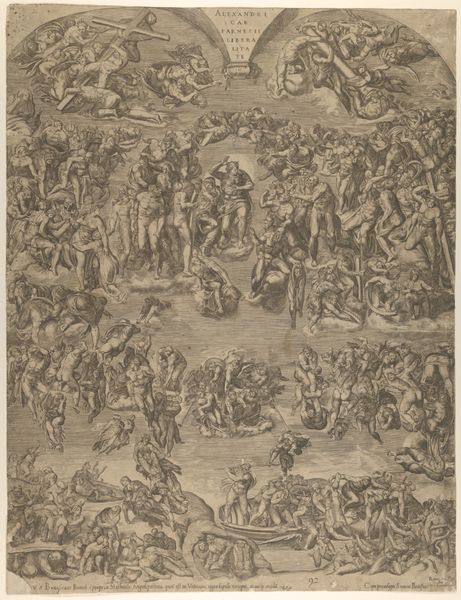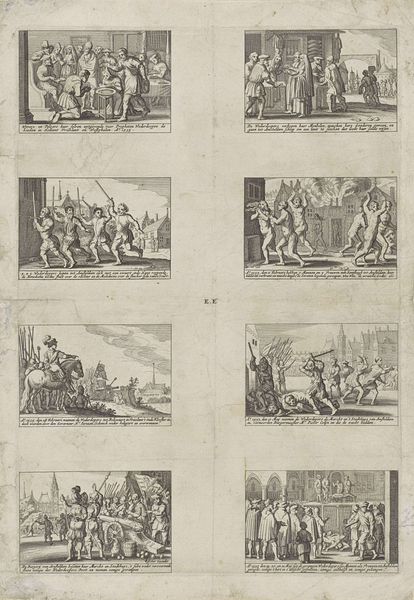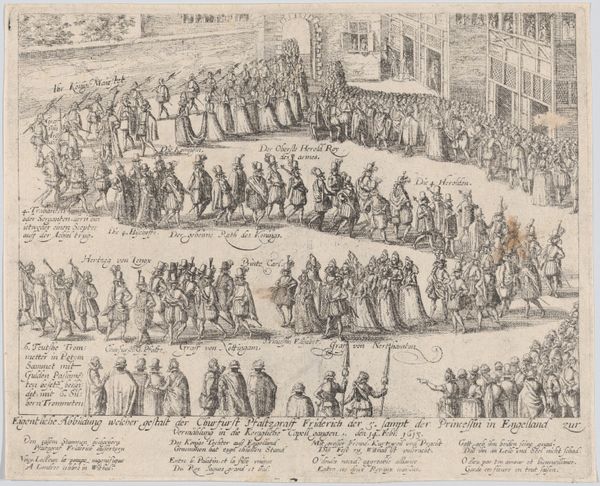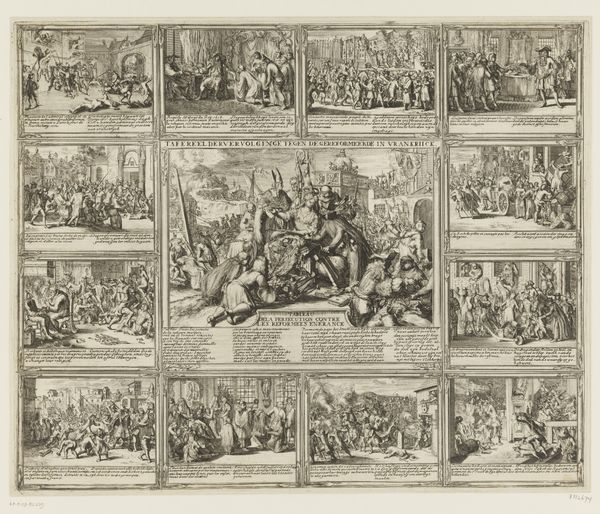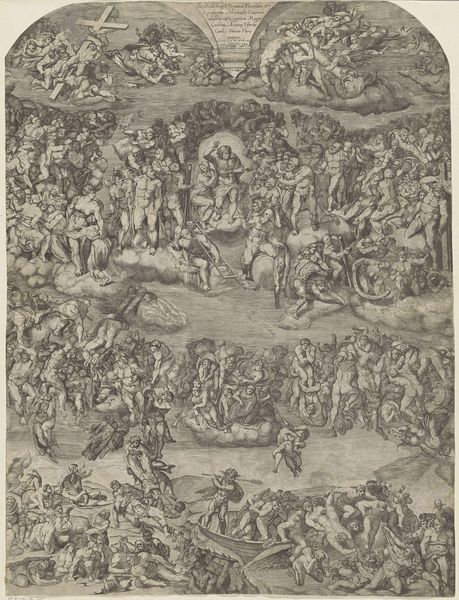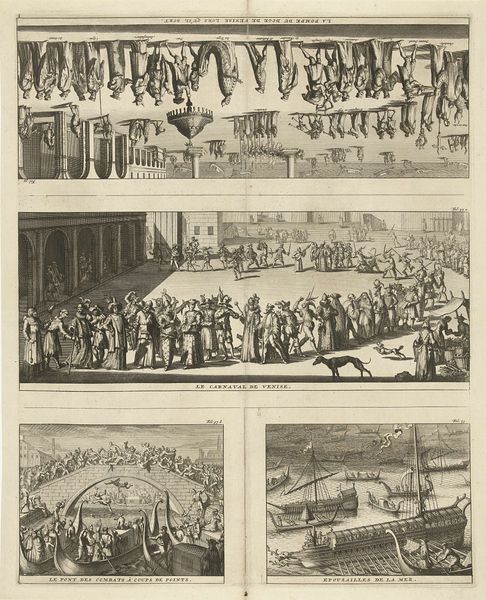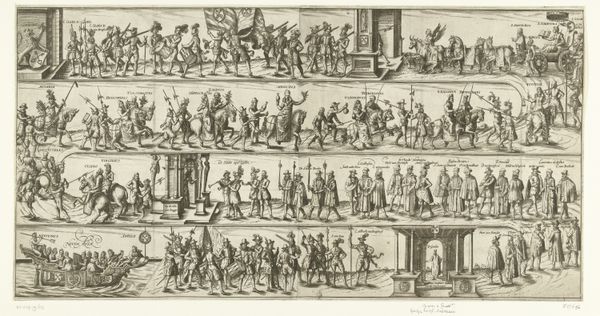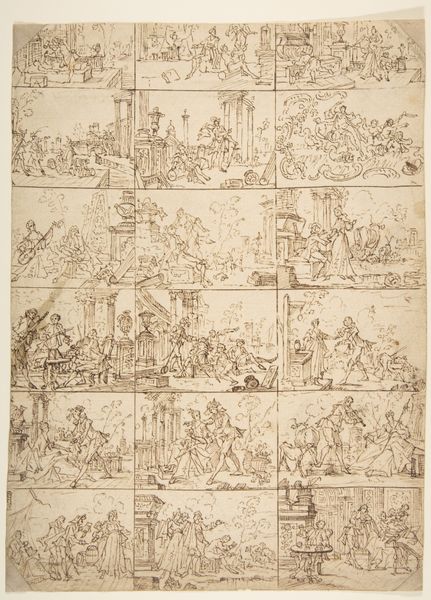
drawing, print, engraving
#
drawing
#
allegory
# print
#
landscape
#
figuration
#
ancient-mediterranean
#
horse
#
cityscape
#
history-painting
#
engraving
Dimensions: Sheet: 19 in. × 14 9/16 in. (48.2 × 37 cm)
Copyright: Public Domain
Curator: This densely populated print, dating from 1603, is titled "Triumph of a Roman Emperor (left side)," created by Antonio Tempesta. Editor: Whoa. My first thought? Organized chaos. It’s like a historical comic strip crammed onto one page, a visual feast with layers upon layers of tiny, intensely active figures. What am I even looking at? Curator: Exactly! It presents a multi-layered narrative, showcasing various stages of a Roman Emperor's triumphant return. This engraving pulls heavily from the visual language of ancient Roman art, reinterpreting imperial power for a contemporary audience. Editor: So, it’s like propaganda, but make it art? I’m seeing processions, crowds, what looks like religious ceremony up top. What strikes me, besides the pure density, is the horses. They add a sense of motion, of forward drive in all those individual stories. Curator: The prominence of horses is certainly not accidental. Equestrian imagery has been inextricably linked with power and authority throughout Western history. In this context, it echoes earlier representations of Roman military might, contributing to the overarching theme of imperial dominance. We also can't overlook the socio-political context in which Tempesta was working. Consider the rising power of various European monarchies in the 17th Century. Editor: Right, and art becomes a tool to reinforce legitimacy. I see that. Looking at it from a different angle, though, do you think Tempesta was overwhelmed trying to fit all these details? There's a slightly frenetic quality that almost undermines the grand statement. Curator: I find that tension quite compelling! The artist had to balance precision and comprehensiveness, while working with the limitations inherent in engraving. He captures a feeling that is at once celebratory and chaotic. How do we reconcile such a monument to power, when its construction appears so fraught? Editor: It feels relevant to now. Monuments are so loaded; they ask to be reinterpreted, re-evaluated, vandalized sometimes, or even torn down! Curator: A piece like this makes visible the relationship between artistic representation, power, and historical memory. By engaging with the work’s context, its purpose, its artistry, we gain a more complete understanding. Editor: For me, getting lost in the detail is the magic. It feels both epic and intimate, inviting a really personal kind of looking, despite the huge scale of the "Triumph" it depicts.
Comments
No comments
Be the first to comment and join the conversation on the ultimate creative platform.

